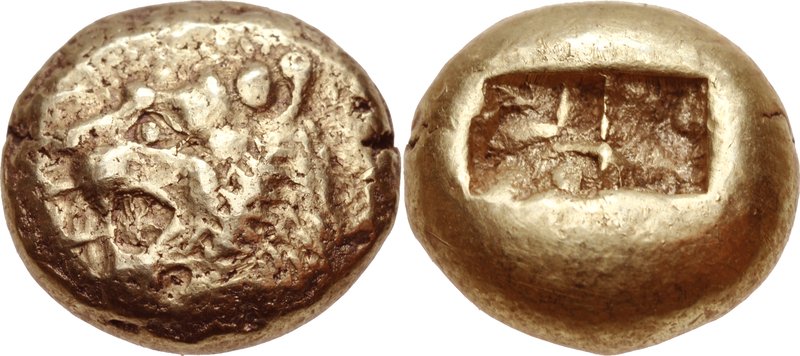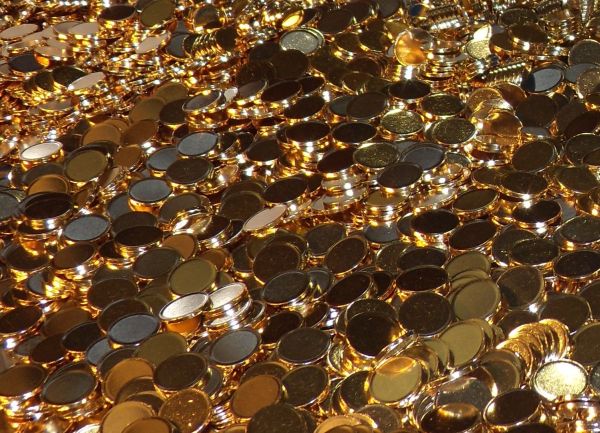The first coins ever to be minted (struck/ made) around 640 B.C. in Lydia and Ionia.
Alyattes Trite (Lydia third stater), one of the first coins ever struck:

Image Courtesy of CNG: www.cngcoins.com
To strike a coin you must first prepare a design and then put this design onto a set of dies. One die will be an obverse (heads) the other will be a reverse (tails) side of the coin. The dies end to be made out of hardened steel and they are usually in a cylindrical shape.

 Coin Die Pictures Courtesy of Hus Sulo
Coin Die Pictures Courtesy of Hus Sulo
In the old days the design on the die was hand carved. Today computers, computer graphics and lasers to cut the design on the die are more commonly used. The design is cut into the die and is incuse (impression), then when the coin is struck the design which is cut out of the die will appear as a raised design on the coin.
Next you need to produce the coin blank, a blank peace of metal to strike the design on. Coin blanks are usually metal and maybe be made form copper, bronze, silver, gold or any other type of metal. A metal strip is rolled out and the the circle shape (coin blanks) are punched out of the strip. A long time ago this process would be done by hand but today it is all done mechanically.

Coin Planchets or blanks
These blanks are then bathed in acid, washed and polished ready to be struck.
Prior to striking the coin blanks are sometimes heated up to soften them.
In the old days coins were struck by hand. You would place one die into a wooden block, then place the blank onto the die and then place the other die onto the coin blank. You would then hit the top die very hard (possibly more then once) with a hammer to produce the design on the coin. These type of coins are called “hammered coins”.
Modern coin blanks are fed into machines and drop into a collar. A collar holds the coin blank in place when struck and stops the metal from spreading out at the edges when struck. Collars can have a design, like milling (vertical lines) or writing on them which will transfer onto the edge of the coin when its struck.
Once the blank it is truck it’ll have an obverse (heads), reverse (tails) design and in most cases a design on the edge. The coin will now be complete, it is sorted and counted, then bagged and distributed to banks for issuing. In the case of proof and uncirculated collector coins they are carefully handled by the edges, with the mint employees wearing gloves and they are then individually packaged to be sold and posted to collectors.
